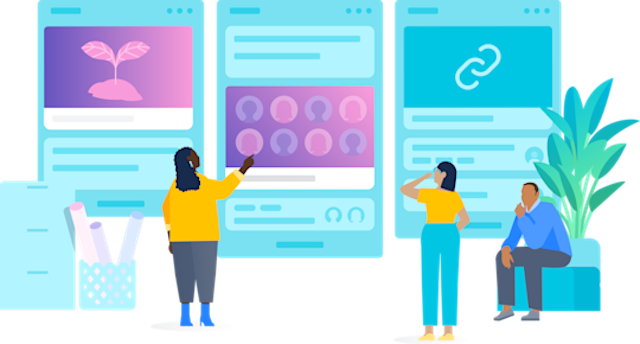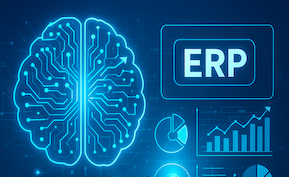Nonprofit Management
AI in Nonprofit Software: Chatbots, Predictive Donor Scoring, and Smarter Campaigns

Introduction: Artificial intelligence (AI) is transforming industries from healthcare to finance—and the nonprofit sector is no exception. While many nonprofits operate with lean staff and limited budgets, AI-powered tools are making it easier than ever to automate repetitive tasks, analyze donor behavior, and launch smarter campaigns. Far from being a luxury for large organizations, AI in nonprofit software is becoming a necessity for those who want to scale impact efficiently. This article explores how nonprofits are using AI in three key areas: chatbots for donor and volunteer engagement, predictive donor scoring, and campaign optimization.
Why Nonprofits Are Turning to AI
Nonprofits face unique challenges compared to for-profit businesses. They often juggle limited staff, tight budgets, and a heavy reliance on volunteers. At the same time, expectations from donors, beneficiaries, and grantmakers continue to grow. AI helps bridge the gap by:
- Reducing Staff Workload: Automating repetitive administrative tasks so staff can focus on mission-driven work.
- Improving Donor Retention: Identifying donor behaviors and predicting who is most likely to give again.
- Enhancing Communication: Delivering personalized, timely messages without requiring manual outreach.
- Strengthening Campaigns: Providing data-driven insights into what messages, channels, and timing work best.
AI Chatbots: 24/7 Engagement Tools
Chatbots are one of the most accessible AI tools for nonprofits. Integrated into websites, social media, or email systems, chatbots can:
- Answer FAQs: Provide instant answers to questions about donations, volunteering, or events.
- Assist Donors: Guide donors through the giving process or help them select recurring giving options.
- Recruit Volunteers: Match interested volunteers to opportunities based on skills and availability.
- Collect Data: Gather valuable insights from conversations to inform future campaigns.
For example, a food bank might use a chatbot to answer common donor questions, direct volunteers to local shifts, or provide beneficiaries with information about food distribution times—all without requiring staff to monitor inquiries around the clock.
Predictive Donor Scoring
One of AI’s most powerful applications in nonprofit software is predictive donor scoring. Instead of treating every donor equally, AI analyzes past giving behavior, demographics, and engagement patterns to predict:
- Likelihood of Giving: Which donors are most likely to give again within a specific timeframe.
- Optimal Ask Amount: How much each donor is likely to contribute, allowing for more effective appeals.
- Risk of Attrition: Which donors may lapse, so staff can intervene with personalized engagement.
With predictive analytics, nonprofits can tailor their fundraising strategies, focusing limited resources on the donors most likely to respond positively. For example, instead of sending the same appeal to 5,000 contacts, a nonprofit could prioritize the 1,000 donors most likely to give at higher levels.
Smarter Campaigns with AI-Driven Insights
Fundraising campaigns are the lifeblood of many nonprofits. AI helps optimize them by analyzing patterns across multiple data points:
- Message Testing: Identifying which subject lines, calls to action, and visuals drive the best response.
- Channel Optimization: Recommending whether email, text, social media, or direct mail will be most effective for a given audience.
- Timing Predictions: Determining when donors are most likely to engage and give.
- Audience Segmentation: Grouping donors into micro-segments for highly personalized appeals.
This approach increases ROI for every dollar spent on marketing while reducing the risk of donor fatigue from poorly targeted messages.
AI for Program Impact Measurement
While fundraising is a primary focus, AI can also support program delivery and impact reporting. By analyzing beneficiary data, nonprofits can identify:
- Which interventions are most effective.
- Trends or patterns in community needs.
- Potential gaps in service delivery.
For example, a healthcare nonprofit might use AI to track which patient groups respond best to certain outreach methods, improving program design and reporting for funders.
Challenges of AI Adoption in Nonprofits
Despite its potential, AI adoption in the nonprofit sector comes with challenges:
- Data Quality: AI is only as good as the data it uses. Many nonprofits struggle with incomplete or inconsistent records.
- Privacy Concerns: Handling donor and beneficiary data responsibly is critical, especially with regulations like GDPR.
- Cost Barriers: While AI is becoming more affordable, advanced features may still stretch budgets.
- Staff Training: Nonprofit teams may need support to effectively implement and interpret AI-driven tools.
Organizations must weigh these considerations carefully and build the right infrastructure before diving into AI adoption.
Best Practices for Nonprofits Using AI
To maximize benefits and minimize risks, nonprofits should approach AI strategically:
- Start with Clear Goals: Define what problem AI should solve, such as donor retention or campaign performance.
- Pilot Programs: Begin with a small project, such as using AI chatbots for event signups, before scaling.
- Combine Human + AI: Use AI to handle repetitive tasks, while staff focus on relationship building and complex decision-making.
- Ensure Transparency: Be upfront with donors and beneficiaries about how their data is being used.
- Leverage Partnerships: Many software vendors offer nonprofit discounts, grants, or free trials for AI features.
The Future of AI in Nonprofits
As AI continues to evolve, nonprofits can expect even more innovative applications:
- Voice Assistants: Donors may one day make contributions via voice commands to Alexa or Google Assistant.
- Real-Time Grant Writing: AI could help draft tailored grant applications based on data inputs.
- Hyper-Personalized Engagement: AI-driven insights could allow nonprofits to deliver unique experiences to each donor or volunteer.
- AI for Equity: Smart tools may help nonprofits identify and address inequities in service delivery.
While these innovations are still emerging, the potential to enhance impact is significant.
Conclusion
AI is no longer reserved for tech giants and corporations—it is becoming an accessible and practical tool for nonprofits of all sizes. From chatbots that enhance donor engagement to predictive scoring that drives smarter fundraising, AI has the potential to save staff time, improve campaign performance, and deepen impact. By adopting AI strategically and responsibly, nonprofits can harness cutting-edge technology to serve communities more effectively and secure the funding they need to thrive.






